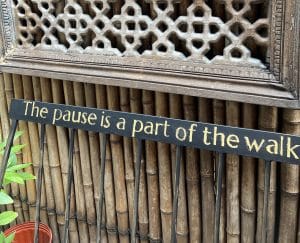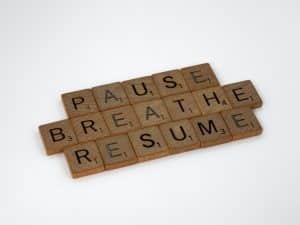
So far this week, we’ve done a lot of thinking about thinking, which is pretty ironic for a blog that’s about mindfulness, a practice in which you learn to observe your thoughts more than engage with them. But alas, all that observing will eventually get you thinking, and ultimately, I think that’s a good thing – especially if you’re doing so with intention and awareness. This weekend’s “no-fail” mindfulness challenge will be a little more about feeling some feels, though – as they relate to what you think, and more importantly what you do (or don’t do).
Our topic this week really boiled down to decision-making, and the various influences that can make it more or less challenging for us. Specifically, we dug into groupthink, which as you may know, is the invisible member of every MBA cohort. Even if you don’t fall prey to it, you will still likely encounter it, given the sheer number of big, scary decisions you have to make on the regular in the MBA lifestyle. This goes for applicants, too, as well as those of you out there who have left your campus days behind. When you’re out there trying to make things happen, it’s easy to lose sight of exactly which “things” are most important for you.
The reasons for getting caught up in groupthink are many and complex. In part, it establishes norms that helps build harmonious communities. It also offers steady ground in times of uncertainty. If we’re not sure what’s going to happen, at least we’re sure what “everyone” would like to see happen, and we decide to agree because that feels safe. But ultimately, it comes down to managing discomfort. It’s tough to feel unsure, unclear or out of sync with those around you. Falling into step with them eases the anxiety that often accompanies charting your own course. But, if you’re going to push through and do it anyway, you have to be real about what you’re feeling.
So this weekend, it’s time to make some time to pause. Even if it’s for just a few minutes, step off the merry-go-round of your very busy and important life, and catch your breath. Inhale, exhale, repeat, until you start to notice your thoughts. By this I mean (for example): when you notice a shift from thinking about the fries you want to have with lunch to realizing that you are thinking about lunch. The former has you in the thought; the latter has you observing the thought. Now, it may not be lunch so much as a million other topics are simultaneously swirling in your head, at least some of which probably involve decisions. Try, if you can, to just notice them.
Next, as you continue to notice these thoughts and allow them to be (think of watching a boat float past you down a river, rather than jumping onto it), you may also notice your body start to change. When that thought about your mid-terms floated by, did you clench your jaw? Did your stomach turn a little? Those are what we call feelings. Why? Because you feel them in your body.
Your next step is to notice the feeling and acknowledge it just like a thought. “That’s stress.” “That’s fear.” And so on. (If you want a guided version of this “Labeling Feelings” meditation, you can find one towards the bottom of this page.) Research has shown (and shown) that labeling emotions helps to regulate your physiological response to them. From my less scientific perspective, it also shows you that you are not your emotions. They are experiences you have, but they pass. You were there before them, and you will be there after them. And if you learn to notice them for what they are, they won’t be the ones in the driver’s seat at decision time.
Definitely take note here that we aren’t talking about denying or suppressing emotions. They happen, just like headaches and hiccups and excited butterflies in your stomach (all potential signs of emotion, btw). You can’t control when they happen, and you also can’t will them away on demand. The idea is to observe, acknowledge and don’t judge. No, it isn’t easy. But it’s also “no-fail,” so give it a shot. If nothing else, you got your mindfulness in for the day. But there’s a good chance that with practice, you will begin to feel less awkward or fearful when your intuition tells you that a certain path isn’t for you right now.
And here you thought some people were thinkers, and some were feelers. Turns out they’re often a package deal, and you don’t have to be one and not the other. But, you do have to be who you are, unquestionably.
Photo credit: Suvan Chowdhury



